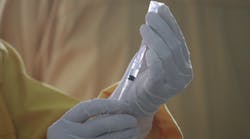Based on a 2017 rate of vaccination against HPV among a group of California 20-year-olds, researchers estimate that this group is at risk for an excess of 1,352 cases of cancer that could be prevented with a 99.5 percent vaccination rate. Treatment for these preventable cancers would cost the healthcare system $52.2 million. The size of the group was 296,525 people, the approximate number of 20-year-olds in California in 2017.
Human papillomavirus, or HPV, is the most common sexually transmitted infection in the United States and is linked to seven types of cancer: Cervical, vaginal, vulvar, penile, rectal, anal, and oropharyngeal, or throat. There are more than 150 types of HPV, and an estimated 80 to 90 percent of sexually active people will be infected with one of those types during their lifetime. Short-term HPV infections are common, particularly in sexually active young people, and usually clear up on their own. Infections that persist for several years pose a cancer risk. HPV-related cancers can take 10 to 30 years to develop.
The researchers estimated the number of HPV-related cancer cases and associated medical costs among all California’s 20-year-olds. Using vaccine coverage rates from 2017 (60.9 percent for adolescent girls, 46.3 percent for adolescent boys), they estimated the lifetime number of cancer cases caused by vaccine-preventable HPV strains among this group. They also estimated the excess cancer cases that would occur based on the 2017 vaccination rate compared to the expected rates if an optimal 99.5 percent of girls and boys were vaccinated.
An increase in California’s HPV vaccination rate would reduce the number of preventable cancers and the financial burden that treatment for these cases would put on the health care system.
The study is published online in the peer-reviewed journal Sexually Transmitted Diseases.




